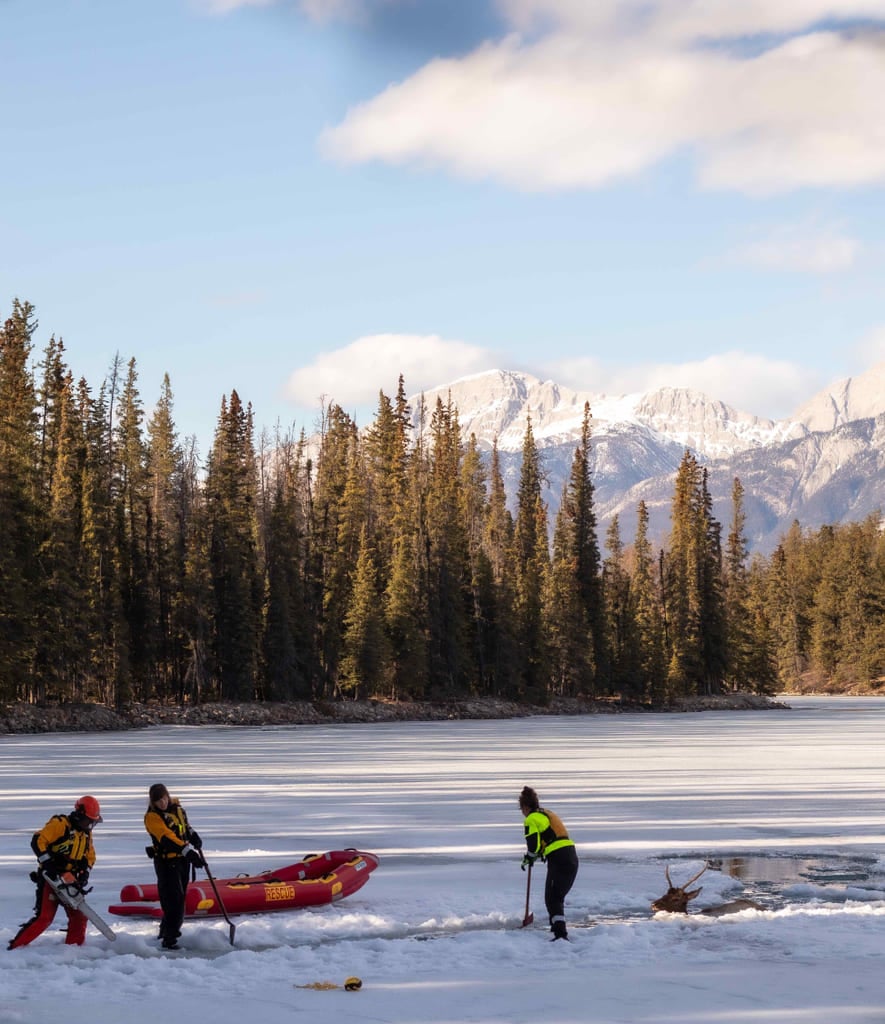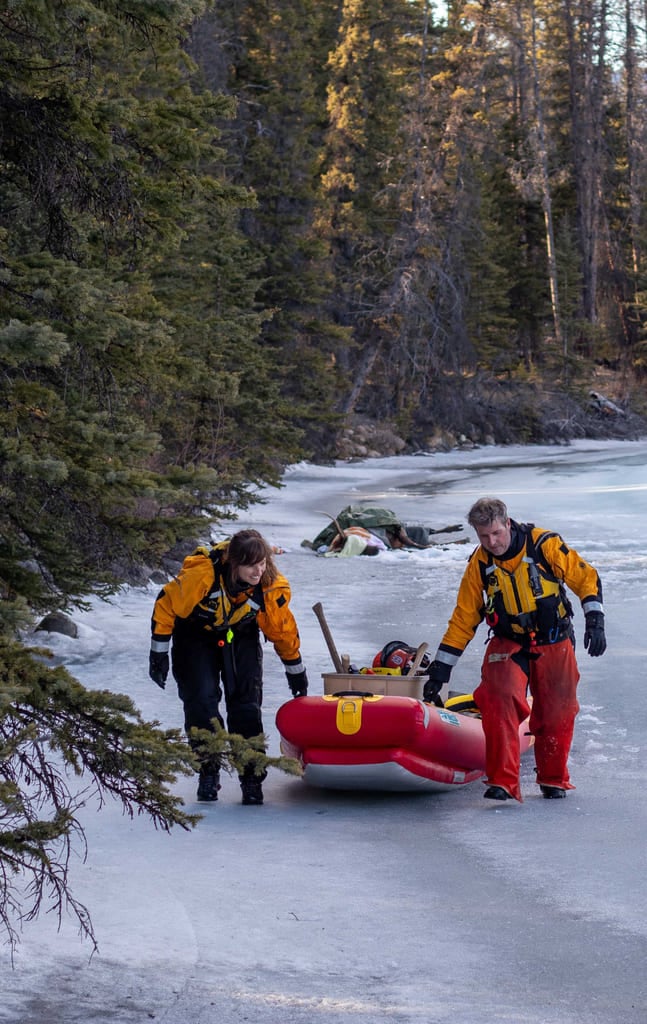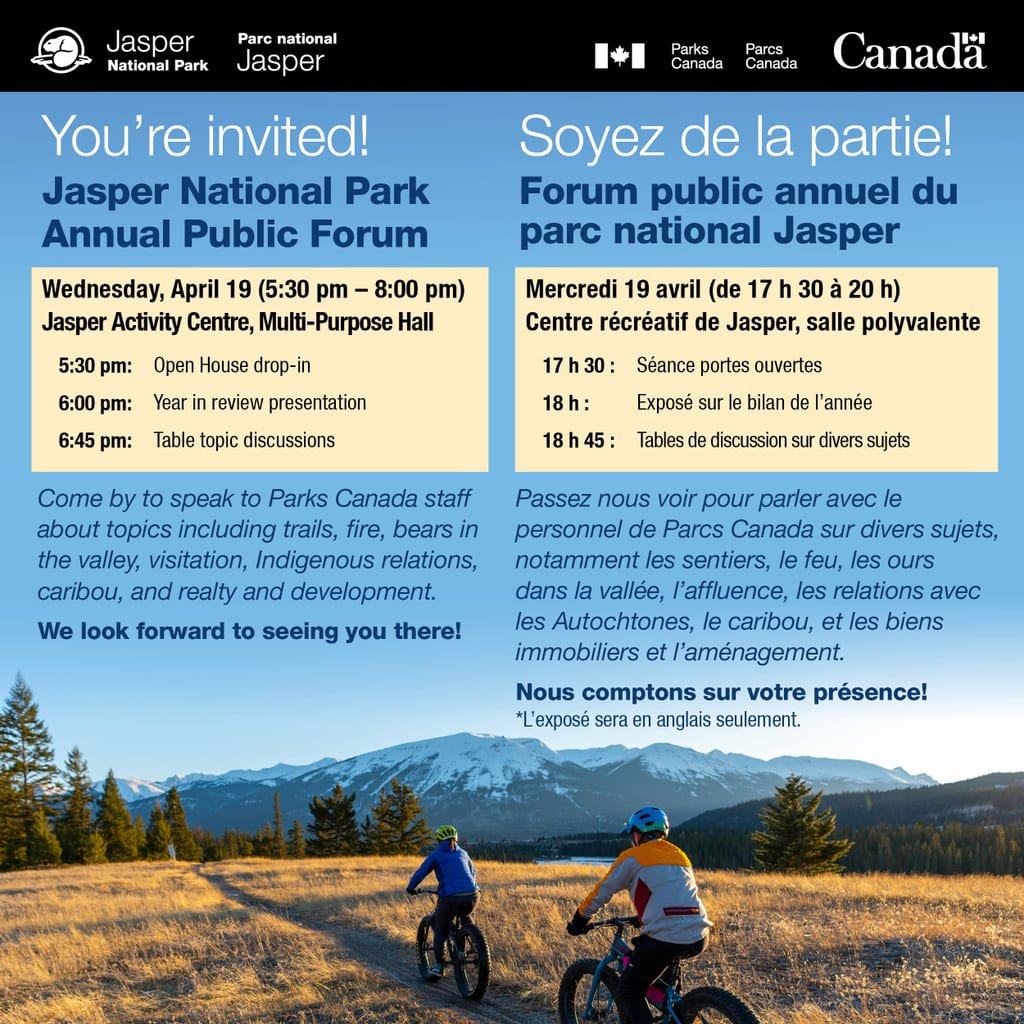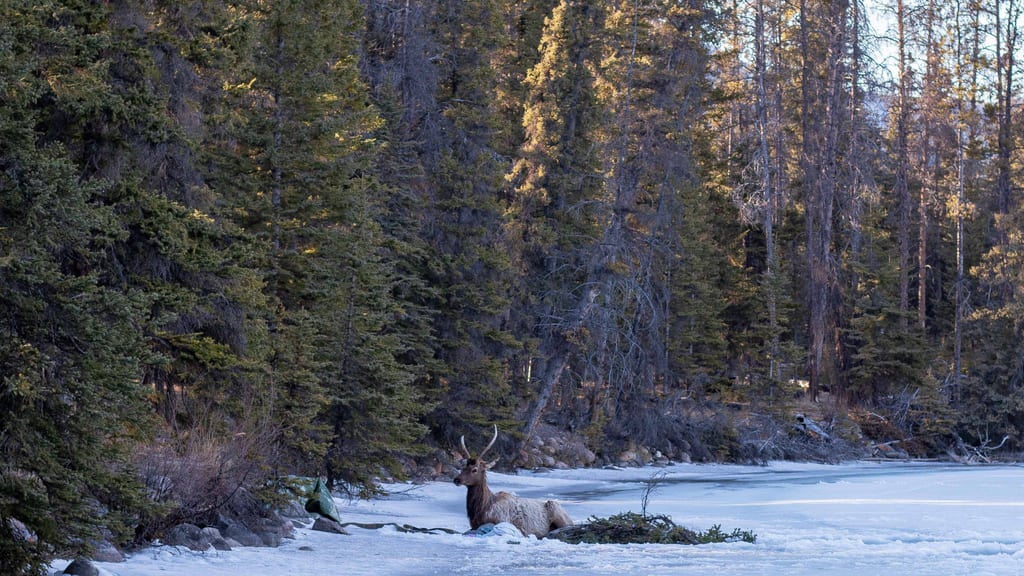Photos by Patrick Barker for The Jasper Local
An elk that fell through a partly frozen lake in Jasper National Park was given a new lease on life by Parks Canada staff.
On April 17 at approximately 5 p.m., a bull elk fell through the spring-melted ice on the south end of Lac Beauvert.
Alerted to the incident by a dog walker, Parks Canada wildlife experts arrived to discover the elk had plunged through the ice approximately 20 metres from shore.

Jasperite Matt Decore was cycling in the area when he heard the buzz of chainsaws. He, along with several other onlookers, stopped to take in the jaw-dropping scene on the ice. Eventually, nearly 20 people were watching the drama unfold.

“We were all cheering for ‘Buddy,’” Decore said.
They were also cheering for Jasper National Park staff’s speedy progress. Using chainsaws, axes and shovels, resource conservation staff began chopping through the ice in an attempt to create a passage to shore. Decked out in dry suits, the team of six still had to be mindful of their own safety—the ice was weak enough to break through in spots, said James McCormick, JNP’s human/wildlife conflict and coexistence specialist.
“We were prepared to fall into the water, but we weren’t prepared to fall into the water next to an elk,” McCormick said.
The elk had created a two metre by five metre hole in the ice. It could get its forelegs onto the ice, but not its hindlegs, McCormick said.

“The plan was to cut a pathway for him to swim to shore,” he said.
The going was made more difficult the closer they got to the lakeside, however; in the shade of the trees, the ice was thicker and more difficult to penetrate. Meanwhile, the elk was showing signs of exhaustion and hypothermia.

“We figure if he survived the water, he’d be there for another hour [recovering],” Decore said.
Eventually, at about 7:30 p.m., the trench extended into water which was shallow enough that, with assistance from Parks Canada staff, the elk could lift itself onto the ice. Under the animal’s belly, officials positioned two large straps. Five of them helped hoist the elk out of the water.
“I was surprised we could lift him. The water’s buoyancy definitely helped us,” McCormick said.
There, Parks Canada staff had laid a bed of pine boughs, onto which the elk collapsed. Wildlife personnel covered the elk with tarps and towels and left the area, hoping the animal would recover. The forecast had temperatures in Jasper dipping to minus 9 degrees Celsius at 11 p.m.

“We hoped it would survive,” Decore said.

Apparently, it has. At 10 p.m., McCormick returned to Lac Beauvert to check on the rescued animal. The elk had shaken off its blankets and walked off into the woods, he said.
“It felt good to see that outcome,” McCormick said.

Parks Canada doesn’t always intervene when the natural elements threaten Jasper National Park wildlife. In this case, the risk to human safety helped make the decision to get involved. McCormick and his team wanted to mitigate the chance of well-meaning members of the public putting themselves at risk. Moreover, a carcass so close to popular trails could pose other hazards to visitor safety.
“There’s a chance a bear gets on it and it becomes a human safety issue,” McCormick said.
This wasn’t the first time McCormick helped an elk out of an icy situation. Ten years ago another elk fell through the ice on Lac Beauvert, next to the Fairmont Jasper Park Golf Course’s famous 16th hole. That extraction was a simpler operation, requiring only a polaski and a hefty helping of elbow grease to chop the animal free.
Bob Covey // bob@thejasperlocal.com


